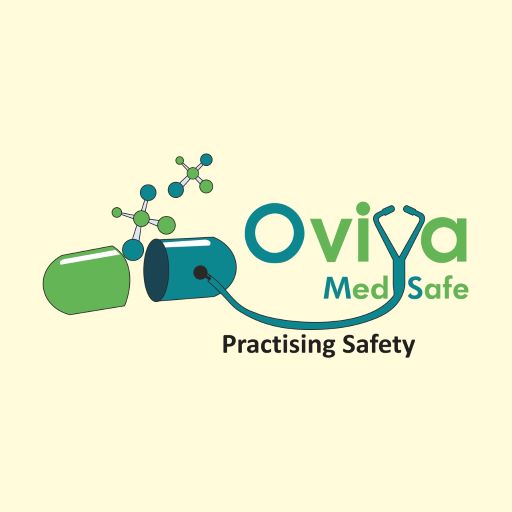Oviya MedSafe – Reforming Pharmacovigilance Business Practices Since 2012
Dear Well-wishers,
I begin writing this November 2022 edition of Oviya MedSafe‘s newsletter (the 120th in the series since April 2012) with a thankful smile, thinking of the heartfelt appreciation we received from many of you in response to last month’s edition in which I spoke about how Oviya MedSafe’s unique QPPV office support has been phenomenally successful in achieving global pharmacovigilance compliance for our clients in an uncompromising yet efficient manner.
As part of the “Pharmacovigilance Business Pearl” series, let us now talk about why a pharmaceutical company and its pharmacovigilance service provider need to trust each other and also live up to the trust the other party has on oneself. Anyone who has watched yesteryear Indian movies may be familiar with a dialogue implying that nobody should conceal any information from their doctor or their lawyer; as such an act could eventually become detrimental to them. I believe and have seen from my Oviya MedSafe journey that this statement holds good for the relationship between a pharmaceutical company and its pharmacovigilance service provider, as well. Partial sharing of information by a client often results in inadequate understanding of the significance of the concerned issue at the provider’s end. Any attempt the provider makes to address the issue is obviously bound to be ineffective, even if the provider genuinely puts in the best possible efforts. Similarly, any issue a provider identifies in a project, regardless of whether the fault is on the part of the client or the provider themselves, should be honestly and promptly shared with the client. Any hesitation or delay in taking this step might result in irreparable damage to the client’s regulatory compliance status as well as the trust they have had on the provider so far.
In the past 10 years of Oviya MedSafe’s broad and deep experience in the pharmacovigilance field, we have many a time come across clients who had preconceived notions on the scope of work they intended to outsource to us and were not willing to accept the lacunae in their thinking when we pointed them out. However, they ultimately relented when they saw the truth for themselves. For example, a medium-sized generic drug manufacturer that approached us held a strong opinion that we would not have to process more than a few Individual Case Safety Reports (ICSRs) in a year. They were not entirely wrong as they only received occasional reports from prescribers. But, what they missed to notice was that they did not have a proper system to collect potential safety data and were not aware that they may get valid cases from published literature. When we advised them that strengthening their safety data sources was the first step they should implement in order to achieve compliance, they were not happy and instead wanted us to only process the spontaneous ICSRs they received. Later, thanks to a pharmacovigilance audit by their marketing partner which was a much bigger renowned multinational pharmaceutical company, they came to realize how weak their system was. But, since they had no budget in place for setting up a robust pharmacovigilance system, it was too late in the day and they lost the business opportunity. However, it was such an experience that made the client take pharmacovigilance seriously from then on.
To be fair to the pharmaceutical industry, especially those companies that are not well-versed in pharmacovigilance, they have historically been wary of ‘astronomical costs‘ associated with pharmacovigilance. This fear stems from their experience of dealing with expensive legacy pharmacovigilance software databases in the past decade and the huge demand-supply gap that existed until about a few years ago for experienced pharmacovigilance consultants. While they could manage without spending much for pharmacovigilance as it was perceived to be needed only for the regulated markets then, the situation is a lot different now with most countries mandating some level of pharmacovigilance activities to be performed by license-holders. The good news is that the pharmacovigilance services industry has evolved a lot in the recent past and neither the technology nor the people are as unaffordable to the majority of the industry as they used to be. In fact, it is the duty of a responsible pharmacovigilance service provider to explain all these facts to the clientele and give them the confidence that they will enjoy cost-effective services with no compliance gap. And, Oviya MedSafe does this in every possible instance, as you all know ![]() .
.
Before concluding, I am pleased to share with you some pictures from Virtue Insight’s 29th Pharmacovigilance 2022 conference in which Oviya MedSafe was an exhibitor. It was wonderful for us to host our industry colleagues at our stall and to hear their compliments on the contents of our exhibits. This event also gave me a chance to meet Dr K Bangarurajan, Retired Joint Drugs Controller (India), CDSCO (HQ), who was kind enough to spend time with me to discuss the challenges faced by various stakeholders of Pharmacovigilance in India. I look forward to meeting you too in our outreach initiatives in 2023.
Wishing you Merry Christmas, Happy Holidays and a Delightful New Year in advance,
Eager to connect with you through our December 2022 newsletter,
With thanks & regards,
Dr J Vijay Venkatraman
MBBS, F. Diab., MBA, FPIPA (UK)
Managing Director & CEO,
Oviya MedSafe Pvt Ltd,
Coimbatore, India
Phone: +91 422 2444442
Director,
Oviya MedSafe UK Ltd,
London, UK
Phone: +44 20 3393 6037
Web: www.oviyamedsafe.com
Mail: info@oviyamedsafe.com
Follow us on Facebook, LinkedIn, Twitter & YouTube

